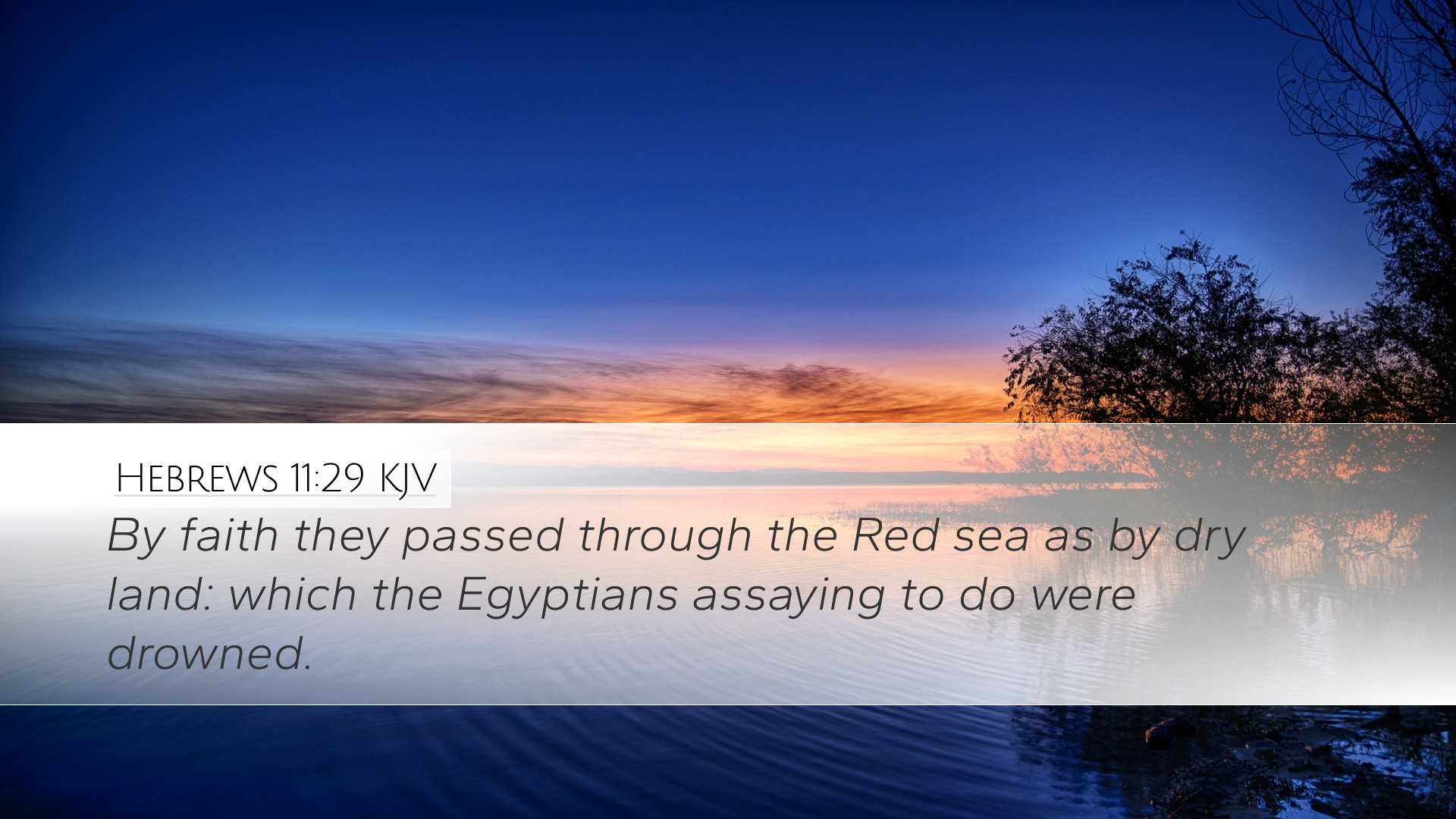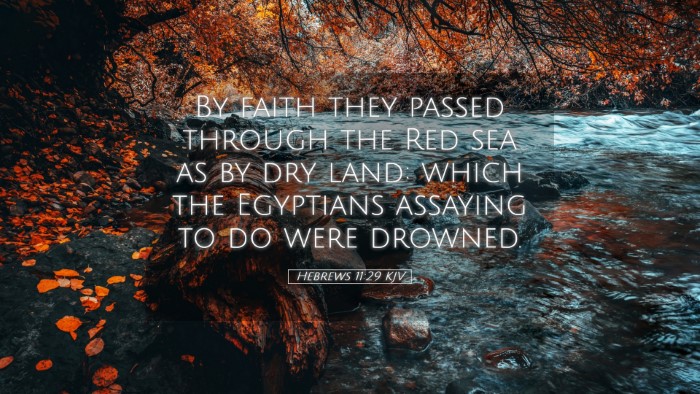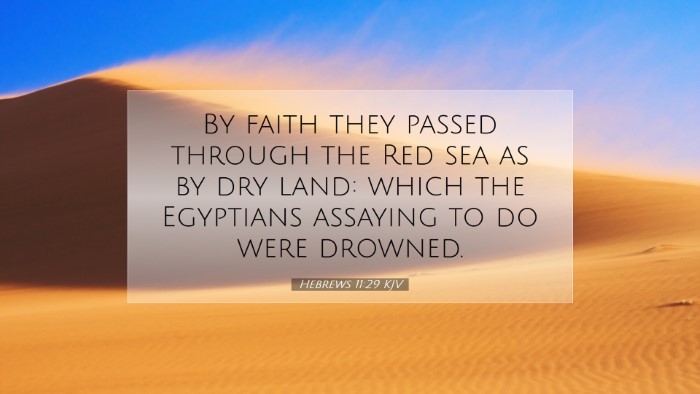Analysis of Hebrews 11:29
Hebrews 11:29 states:
“By faith they crossed the Red Sea as on dry land; but when the Egyptians attempted to do the same, they were drowned.”
This verse forms part of the larger context of the Hall of Faith in Hebrews 11, where the author highlights various Old Testament figures and their demonstration of faith. Specifically, it recounts the momentous event of the Israelites crossing the Red Sea, providing profound insights into God's deliverance and power.
General Overview
The crossing of the Red Sea is a pivotal event in the narrative of the Exodus, displaying not only the miraculous intervention of God but also serving as a type of salvation for His people. The verse emphasizes the contrast between the faith of the Israelites and the folly of the Egyptians.
Exegetical Insights
Herein are some significant thoughts from celebrated public domain commentators:
Matthew Henry's Commentary
Matthew Henry emphasizes the pivotal nature of faith in this passage. He notes:
- Faith's Action: The Israelites, faced with the impossible situation of the Red Sea before them and the Egyptian army behind them, acted upon their faith in God's promise. This faith spurred them to step into the waters, and by doing so, they demonstrated complete trust in God’s deliverance.
- Divine Intervention: Henry underscores that the narrative highlights God's sovereign power. He not only parted the waters but did so in a manner that allowed the Israelites to cross safely, while simultaneously ensuring the destruction of their pursuing enemies.
- Lesson on Disobedience: The fate of the Egyptians serves as a sobering reminder of the consequences of disobedience and the pursuit of one’s own course against God’s plan. Their attempt to follow the Israelites into the sea illustrates a blatant disregard for the miraculous works of God.
Albert Barnes' Notes on the Bible
Albert Barnes provides additional layers of meaning by expounding on the spiritual implications of the crossing:
- Symbolism of Baptism: Barnes draws parallels between the crossing of the Red Sea and Christian baptism. Just as the Israelites were delivered through water, believers today are symbolically delivered from sin through baptism, representing a new beginning in faith.
- Faith in Action: He emphasizes that the Israelites did not merely believe God would deliver them; they acted on that belief. This active faith is a theme prevalent in Hebrews 11 and is critical for believers today.
- The Jordan as a Type of Faith: The crossing is also seen as a symbolic foreshadowing of entering into the rest and promise of God, illustrating faith's journey as one where challenges must be faced with assuredness in God's providence.
Adam Clarke's Commentary
Adam Clarke offers detailed reflections on the historical and theological aspects of the verse:
- Historical Context: Clarke discusses the importance of the redemptive story within Jewish tradition, portraying the Exodus as a foundational narrative. The crossing of the Red Sea is depicted as a national miracle, marking the birth of the nation of Israel.
- Contrast of Outcomes: He similarly observes the dramatic contrast between the fates of the Israelites and Egyptians, echoing the theme of divine justice. The Egyptians' attempt to replicate the Israelites’ miraculous crossing resulted in their demise, highlighting the folly of opposing God's will.
- Encouragement for Believers: Clarke concludes with a note of encouragement for followers of Christ, suggesting that Christians face similar challenges of faith today. Just as God delivered the Israelites from bondage, He continues to offer liberation from spiritual enslavement through faith.
Theological Implications
This verse underscores several theological themes essential for preaching and teaching:
- The Nature of Faith: Faith is not merely belief but is demonstrated through action. The Israelites' passage through the sea illustrates a verb faith—a faith that acts in response to God's command.
- God's Sovereignty and Justice: The episode exemplifies God's sovereignty over creation and His justice. The way He delivers His people and punishes their oppressors demonstrates His authority and power over life and death.
- Types and Shadows: The crossing serves as a typology for baptism and salvation in the New Testament context. Believers see themselves being led out of bondage into a new life through water as a symbol of God's intervention.
Conclusion
Hebrews 11:29 serves as a powerful testament to faith in action, the fulfilling of God’s promises, and the pivotal Redemptive narrative of the Israelites. It reminds pastors, theologians, and believers alike of the imperative to trust in God amidst impossible circumstances and serves as a beacon of hope for those facing insurmountable odds. The faith of the Israelites is not only an historical account but a model for the faithful journey of every believer today.


